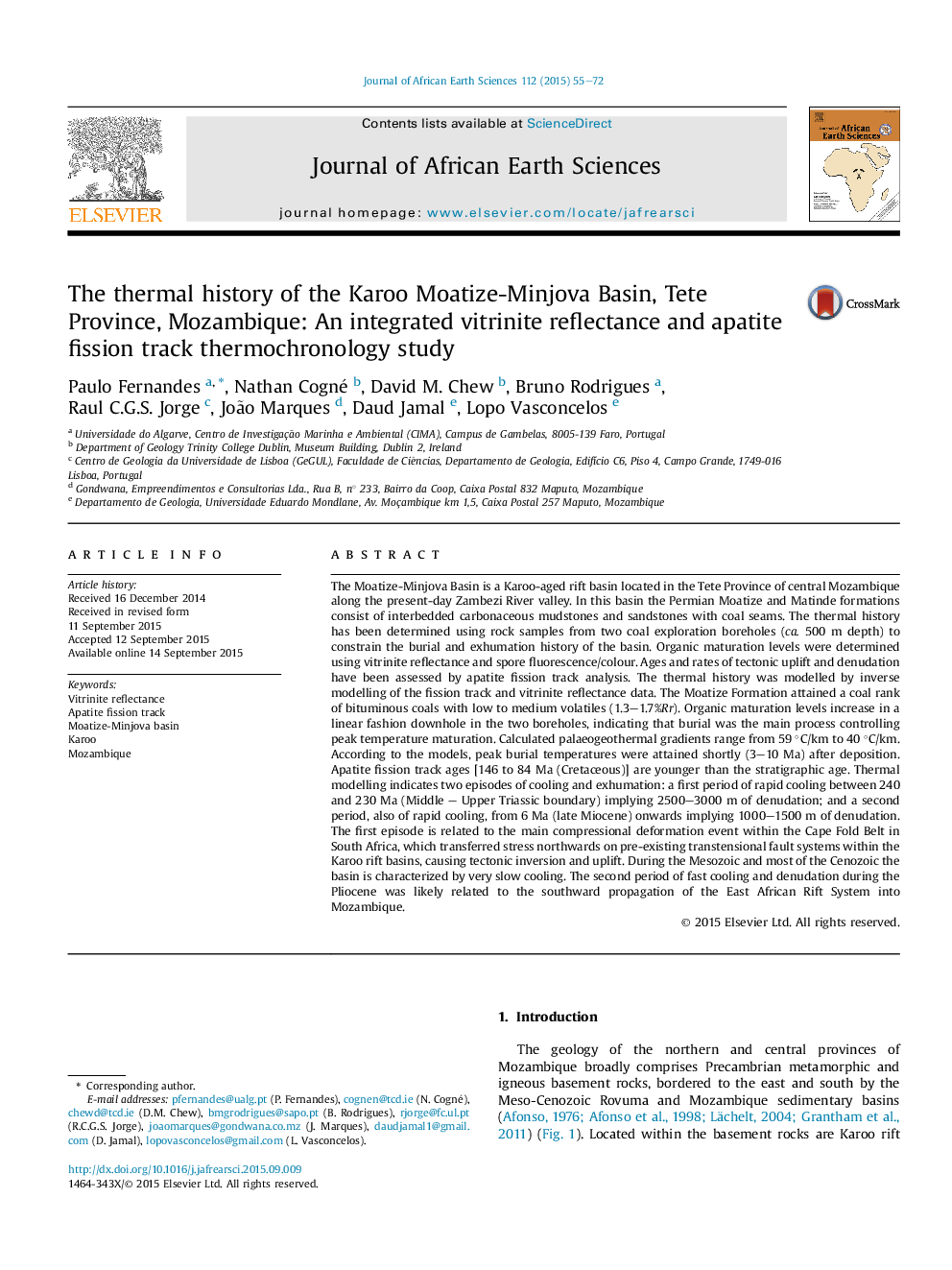| کد مقاله | کد نشریه | سال انتشار | مقاله انگلیسی | نسخه تمام متن |
|---|---|---|---|---|
| 4728370 | 1356450 | 2015 | 18 صفحه PDF | دانلود رایگان |
• VR yields low to medium bituminous coal rank values related to burial.
• Peak temperature is reached shortly after deposition, at 240 Ma.
• Estimated palaeogeothermal gradients range between 40 and 59 °C/km.
• Two cooling phases are identified during the Middle Triassic and Late Neogene.
The Moatize-Minjova Basin is a Karoo-aged rift basin located in the Tete Province of central Mozambique along the present-day Zambezi River valley. In this basin the Permian Moatize and Matinde formations consist of interbedded carbonaceous mudstones and sandstones with coal seams. The thermal history has been determined using rock samples from two coal exploration boreholes (ca. 500 m depth) to constrain the burial and exhumation history of the basin. Organic maturation levels were determined using vitrinite reflectance and spore fluorescence/colour. Ages and rates of tectonic uplift and denudation have been assessed by apatite fission track analysis. The thermal history was modelled by inverse modelling of the fission track and vitrinite reflectance data. The Moatize Formation attained a coal rank of bituminous coals with low to medium volatiles (1.3–1.7%Rr). Organic maturation levels increase in a linear fashion downhole in the two boreholes, indicating that burial was the main process controlling peak temperature maturation. Calculated palaeogeothermal gradients range from 59 °C/km to 40 °C/km. According to the models, peak burial temperatures were attained shortly (3–10 Ma) after deposition. Apatite fission track ages [146 to 84 Ma (Cretaceous)] are younger than the stratigraphic age. Thermal modelling indicates two episodes of cooling and exhumation: a first period of rapid cooling between 240 and 230 Ma (Middle – Upper Triassic boundary) implying 2500–3000 m of denudation; and a second period, also of rapid cooling, from 6 Ma (late Miocene) onwards implying 1000–1500 m of denudation. The first episode is related to the main compressional deformation event within the Cape Fold Belt in South Africa, which transferred stress northwards on pre-existing transtensional fault systems within the Karoo rift basins, causing tectonic inversion and uplift. During the Mesozoic and most of the Cenozoic the basin is characterized by very slow cooling. The second period of fast cooling and denudation during the Pliocene was likely related to the southward propagation of the East African Rift System into Mozambique.
Journal: Journal of African Earth Sciences - Volume 112, Part A, December 2015, Pages 55–72
